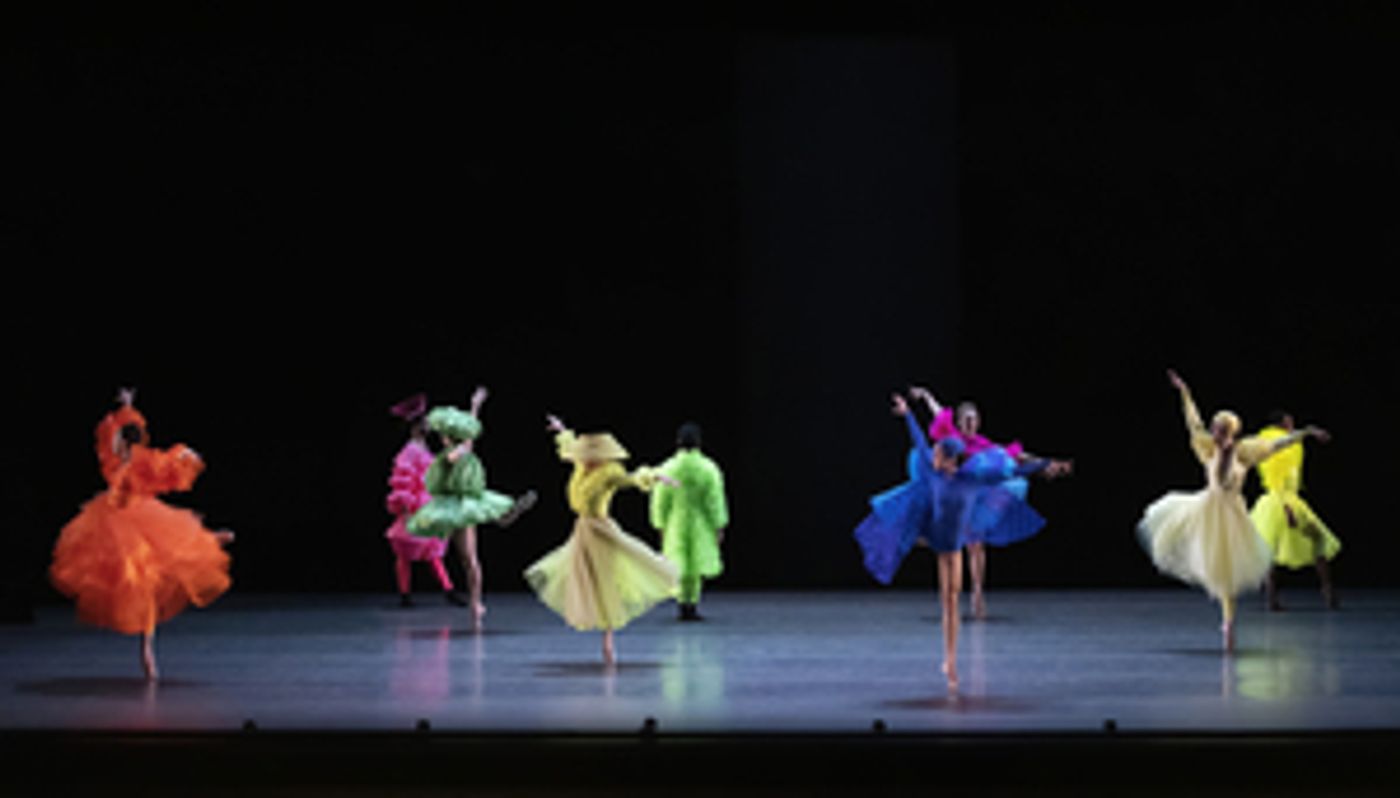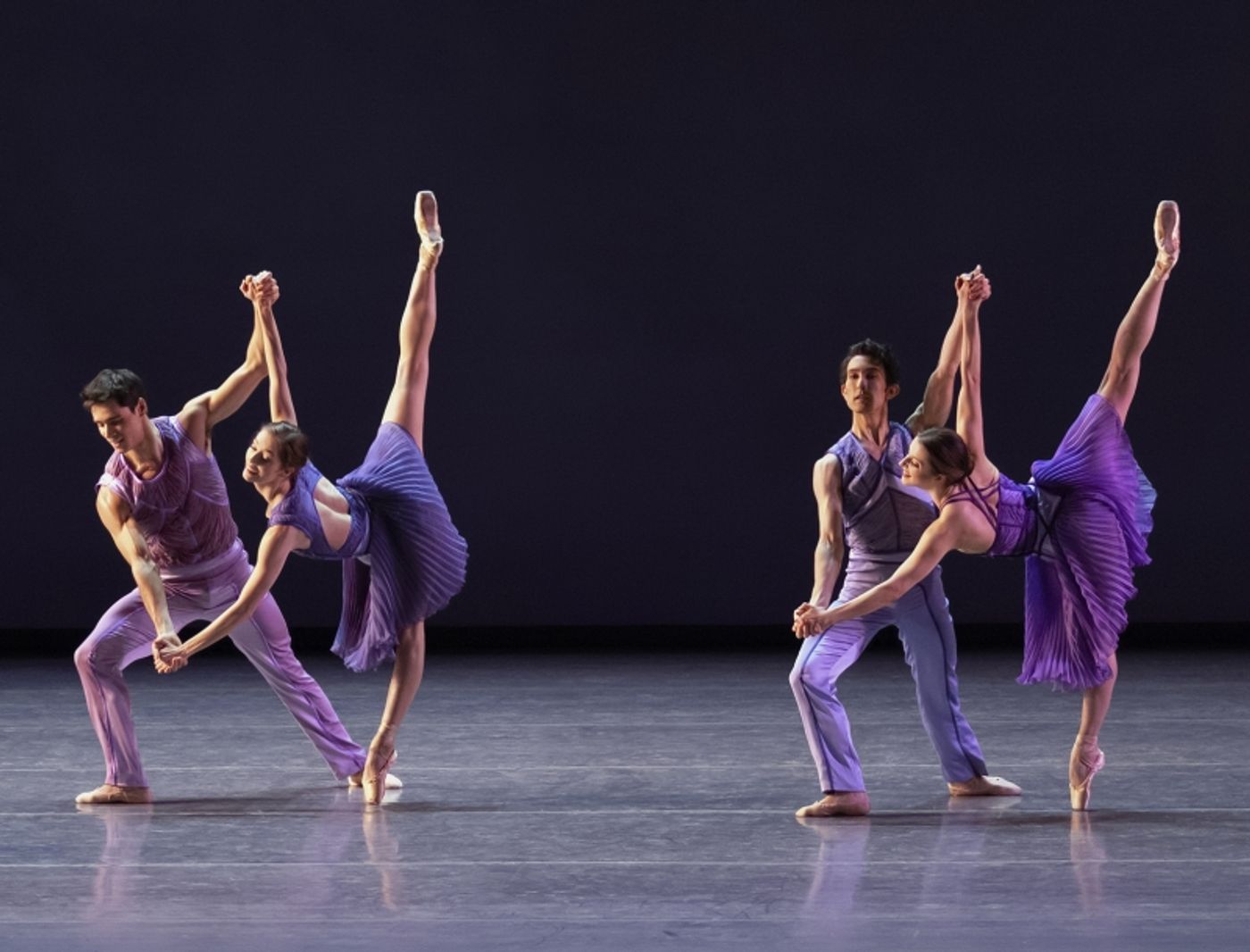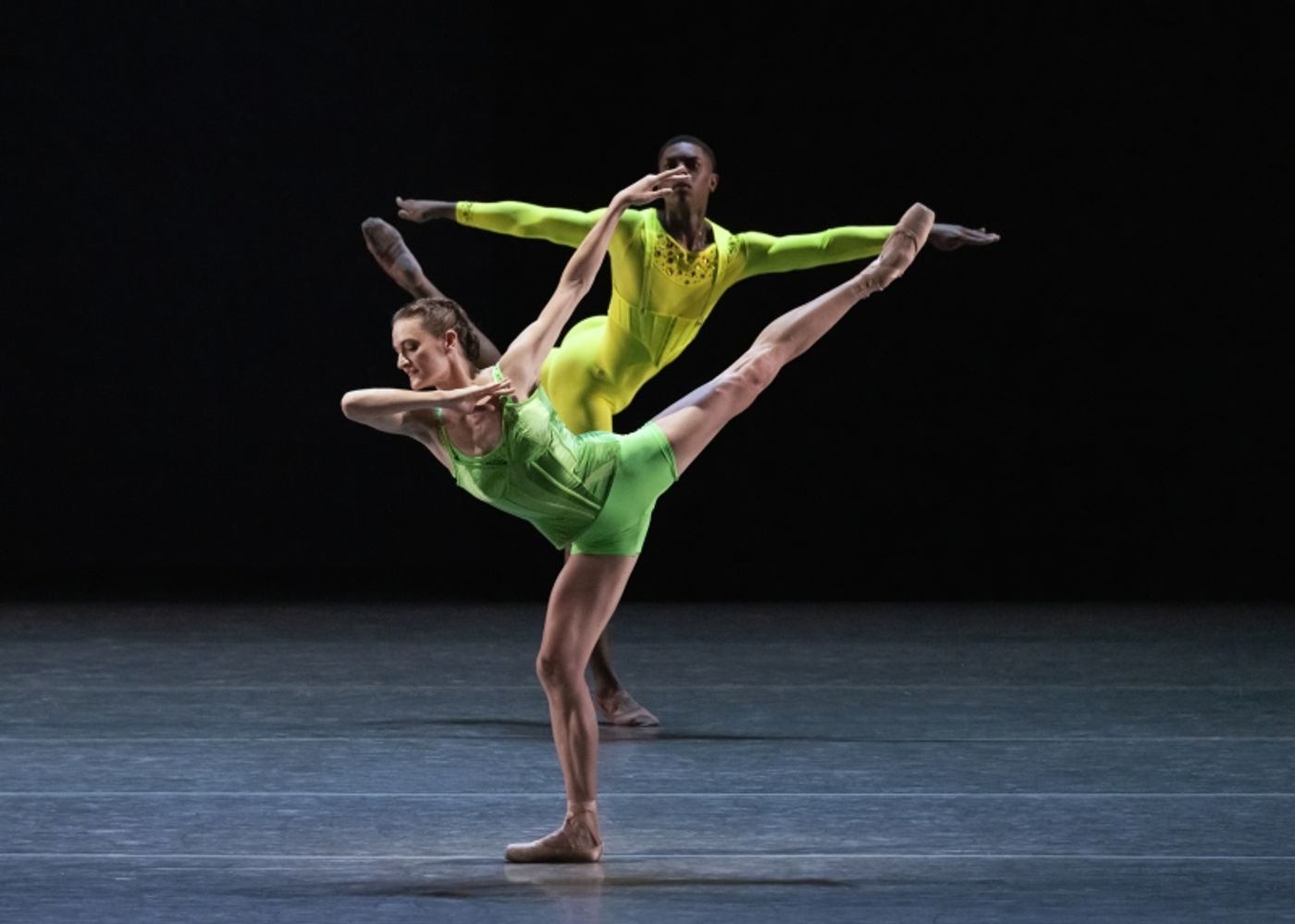Review: VISIONARY VOICES at The Kennedy Center
This production was a mesmerizing two-night engagement at the Kennedy Center.

On June 7th and 8th, In the comfortable and open atmosphere of the Kennedy Center's Opera House Theater, the New York City Ballet Presented Visionary Voices, showcasing three contemporary choreographers; Jamar Roberts, Sidra Bell, and Justin Peck (respectively). The evening was accompanied by live music from The Kennedy Center Opera House Orchestra.
The first piece, titled Emanon - In Two Movements, choreographed by Roberts, with music by Wayne Shorter, and conducted by Ron Wasserman, had the privilege and pressure of being the opener to the show.
Emanon - In Two Movements started with a singular dancer (Unity Phelan) against a short white backdrop. The solo was spritely and invigorating, paving the way for what would be a confident and playful performance.

The dance, while perhaps most "conventional" out of the three that evening, however, it would be inaccurate to say it was conventional in the grand scheme of American dance. It was pleasantly dichotic, managing to be as jarring and isolated as it was fluid and aqueous. The dancers seemed to play with the music, teasing it, and having it tease them back. They also shared similarities of course in genre, both being very jazzy, frisky, and quick.
One moment, however, where things took a slight turn, was at Jonathan Fahoury's excellent solo. The dancer moved in such a captivating manner, almost contorting his body at the will of Shorter's composition. While still playful, and even humorous, the solo provided emotions and tension not featured in other parts of the piece.
As the piece progressed, the plain white backdrop was revealed by a curtain to be taller and taller, and by the end of the show, it stood, unblocked and bold. The design by Brandon Stirling Baker (who also designed the lights of Emanon), was incredibly effective in creating a sense of scale that grew with the performers and their dancing. While desolate, it was also malleable, changing with the lighting, creating whatever space the dancers needed to inhabit.
The costumes functioned similarly. The eight garments were all a soft, pastel iteration of either blue or purple, and featured some geometric shapes and structuring, along with the occasional white accent. They were at the same time modern, yet seemingly referencing an almost '60s or '70s architectural feel, leaving them in the almost retro-futurist territory. Regardless of semantics, the pieces created simple, fractal silhouettes, that aided to the performance, and were eye-catching, yet completely inoffensive.
Emanon was most captivating when it had many moving parts. The finale involved all eight dancers on stage at the same time, moving to different parts of the composition, all at the same time. It was a lot to take in, in the best way possible. While the movements were varied and at odds, the dynamism was very satisfying and made for a great end to the piece.
Emanon featured the dancing of Unity Phelan, Indiana Woodward, Alexa Maxwell, Emma Von Enck, Anthony Huxley, Jovani Furlan, Victor Abreu, and Jonathan Fahoury.
After a brief intermission, the audience was presented with Sidra Bell's Suspended Animation, which featured music by Nicholas Britell, Oliver Davis, and Dosia McKay, which was conducted by Andrew Litton.

Suspended Animation was striking in every sense of the word. Opening with two dancers on opposite corners of the stage, it featured long translucent curtains at times, separating the dancers into different sections and tableaus.
The piece was split into four sections; i- the object is to slip, ii- Communion, iii protrusion, and iv- Gatherings of the Future.
The opening was a spectacle indeed. Many dancers moved on and off stage, revealing costumes of unpredictable size, proportion, and color. These garments (designed by Christopher John Rogers, and supervised by Marc Happel) were an integral part of the piece, and likely the first thing an audience member was likely to mention after it ended.
Large architectural pink poofs, a peacock-esque poncho, and neon green frilled sleeves just scrape the surface of what was shown in fabric on stage. Applause must go to Christopher John Rogers for being able to implement a literal rainbow in the costumes without them coming off as kitsch, or overly flashy, which rainbow so often is.
With the opening music (Is now not enough? By Dosia McKay), the aforementioned, and the sprawling, hypnotizing traffic of choreography on stage, the whole thing delivered the atmosphere of a whimsical, fanciful forest. There seemed to be many different birds, animals, plants, and fairies interacting with each other in some unseen ecosystem.
While not necessarily light, per se, the opening of the piece was not decidedly heavy. However, the piece did evolve into something more somber, and at times almost heartbreaking in its later quarters.
More than the other two pieces of the night, Suspended Animation contained a story. While impossible to discern after a singular viewing, it clearly had motivations, a mission, a theme it implored the audience to explore- arcs to ponder. In this way, it also seemed to have characters. This was aided by the incredibly unique costumes, but it seemed that each performer was not just a means to execute new and exciting choreography, but a person, a character, with motivations, wants, and needs.
Whether purposely or not, the piece came off as ambitious, and almost decidedly queer. In the world of the performance, there seemed little concern for the structures and performative aspects of gender, as they are in the convention of classical dance. The costumes were certainly genderless (or genderful, if you prefer), and the piece featured some same-gendered pairings. Perhaps it was also the addition of the subtle rainbow that aided in an allusion to queerness, though even without a literal rainbow, the same interpretation would likely be made.
Suspended Animation featured the dancing of Emily Kikta, Unity Phelan, Mimi Staker, Megan LeCrone, Christina Clark, Isabella LaFreniere, Harrison Ball, Anthony Huxley, Peter Walker, Kennard Henson, Christopher Grant, and KJ Takahashi.
After another intermission, the final piece, Partita, was performed. This piece was choreographed by Justin Peck, and featured music by Caroline Shaw.

Right at the start, it was clear this piece had a very specific aesthetic vision. The scenery, designed by Eva LeWitt was the most intensive of the night; throughout the piece, long, almost streamer-like pieces of fabric, were used to create multicolored circles that hung over the performance. The color blocking and geometry were striking, though a bit playful.
It meshed nicely with the costumes, which were the most minimal of the night. Each dancer was sporting a simple tank top, either grey or one of various not-too-saturated colors, and either black or grey shorts or leggings, and white sneakers.
The outfits at first almost harkened to an '80s workout video, especially with the geometry and colors hanging so closely around them, however, throughout the piece the style and blocking of the choreography were able to separate the dancers from that allusion.
Partita was a machine, a robot. That is not to say it featured robotic choreography, however, it worked with many different quickly moving pieces (dancers) to move a larger something forward, to be greater than itself. The piece explored itself by presenting this large, biotic machine of dancing, dissembling it with solos and duos, and then resembling it in another form at its finale. It was quick, strange, and captivating.
It seemed to concern itself with cycles and repetition. Many movements and motifs were repeated over and over throughout the show, by different performers, and in different contexts. The image of the circle was prevalent in relation to these movements, accentuating their cycles.
Similar ideas were explored with the music, which was completely acapella, and performed by a chorus called Roomful of Teeth (which is a very good name for an acapella group). With the strange, almost alien sounds of the human voice, and the jarred mechanic motion on stage, the audience was truly mesmerized.
All three pieces presented something fresh and exciting; things that both respect and honor the traditions of ballet and dance, yet aren't afraid to break conventions, and reimagine them.
Partita featured dancing by Claire Kretzschmar, India Bradley, Tiler Peck, Ashley Hod, Harrison Coll, Chun Wai Chan, Roman Mejia, and Taylor Stanley.
This particular piece was a two-night engagement, however, the New York City Ballet is at the Kennedy Center until June 12th, performing A Midsummer's Night Dream. Information on both shows can be found at the Kennedy Center's website, at kennedy-center.org.
All photo credits go to Erin Baiano.
Reader Reviews
Videos
